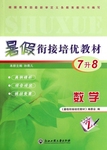题目内容
Some weight-loss camps, which are rare in China just a few years ago, have sprouted in Beijing, Qingdao, Shenzhen, and other cities. Today about 15 percent of adults, or 200 million Chinese, are reportedly overweight. Of these, 90 million—about 7 percent—are obese(极肥胖的).
Experts say the obesity epidemic is spreading to children, though more slowly than in adults. The trend, they say, will have a huge impact on the health of China’s citizens and economy. “We’re seeing a very large proportion of children and adolescents who are quite heavy and aren’t moving much,” said Barry Popkin, a nutrition professor. Popkin carries out an ongoing health-and-nutrition survey of 16,000 households in China. He says more kids today are overeating and putting on weight “quite quickly”. In just ten years China’s childhood obesity rate has doubled, with the greatest gains coming in urban areas. “In big cities it’s a big problem.”
Some experts blame the extra fat on a range of factors, many of them tied to China’s rapidly changing economy and culture. The diets of Chinese adults and children are far higher in calorie-laden meats, fish, eggs, dairy products, fats, and sugars than ever before. In addition, kids—especially city dwellers—are more sedentary today and spend more time indoors in front of homework, television, computer games, and the Internet.
Shuwen Ng, a health economist, says that kids in China now have pocket money, and they spend a portion of it on junk food. Ng adds that advertising and peer groups influence kids’ food choices. Certain foods, such as new candies or fast food, have attractive features.
China’s childhood obesity rate still lags that of the United States, where some 15 percent of kids are said to be obese. But the long-term effects are equally serious.
【小题1】According to the passage we know ________.
| A.weight-loss camps was very popular in China six years ago |
| B.about 290 million Chinese are overweight in China in all |
| C.in China childhood obesity rate in rural areas is lower than that in major cities |
| D.America’s childhood obesity rate is lower than China’s |
| A.Advertising on some new candies | B.High quality diets |
| C.Playing computer games for long time | D.Having pocket money |
| A.attentive | B.earnest | C.absent | D.inactive |
| A.obesity explosion in China will affect the United States |
| B.there are great difference in kids’ food choices now |
| C.junk food contributes to childhood obesity |
| D.city children eat more than rural children |
| A.Chinese Childhood Obesity Explosion |
| B.Weight-loss Camps in China |
| C.Obesity Explosion’s Impacts On Chinese Economy |
| D.Obesity Explosion In China And America |
【小题1】C
【小题1】B
【小题1】D
【小题1】C
【小题1】A
解析【小题1】C 细节题。从第一段可知AB项错误。从最后一段China’s childhood obesity rate still lags that of the United States可知D错误。故选择C。
【小题1】B 第三段第四段分别提到了儿童肥胖的原因,有spend more time indoors in front of homework, television, computer games, and the Internet, have pocket money, and they spend a portion of it on junk food以及advertising and peer groups influence kids’ food choices只有B项没有提及。故选择B。
【小题1】D 猜测词义。由后面的描述spend more time indoors in front of homework, television, computer games, and the Internet得知sedentary表示不活跃或近似的意思。故选择D。
【小题1】C 文章第四段在分析儿童肥胖原因时有提及kids in China now have pocket money, and they spend a portion of it on junk food由此可推测垃圾食物是导致儿童肥胖的一个因素。
【小题1】A 考察概括能力。全文主要着重介绍中国的儿童肥胖问题以及产生的原因。故选择A。

 暑假衔接培优教材浙江工商大学出版社系列答案
暑假衔接培优教材浙江工商大学出版社系列答案 欣语文化快乐暑假沈阳出版社系列答案
欣语文化快乐暑假沈阳出版社系列答案| 完型填空。 | |||
| Suppose, for example, that a teacher tells her students they each must do one hundred maths problems 1 coming to school the next day. The 2 complain about so much home study. But one student does not 3 anything at all. That student is an eager beaver. He 4 to work out maths problems, and does not mind all the 5 . Another eager beaver works as a salesman for a business. He 6 arrives at the office before anyone else, and is the 7 person to leave. The man works hard, because he 8 his job. He is a true “eager beaver”. The expression 9 the name of a hardworking animal, the beaver. Beavers are 10 creatures. They are like mice and rats, but much 11 . Some weigh more than twenty-five kilograms. Beavers have a large, black, flat tail to 12 them swim. They also have thick brown hair or fur to keep them warm in cold 13 .They have front teeth 14 enough to cut down large trees. Beavers spend a lot of time in the water, building dams(堤,坝) to form little 15 or pools. They work hard to cut down trees, 16 branches and put them across streams. They use their tails to pack mud on the branches to make the dams solid. 17 other animals work so hard. In fact, for two hundred years or more, the beaver was the most valuable animal in North America. And thus most of the beavers were killed. For a time, they were in danger of 18 completely. But laws were passed to 19 the beaver, and today, the 20 is rising. And, like the animal, the expression “eager beaver” is in no danger of dying out. | |||
| ( )1.A.when ( )2.A.children ( )3.A.do ( )4.A.loves ( )5.A.physical labour ( )6.A.seldom ( )7.A.most eager ( )8.A.has to do ( )9.A.comes from ( )10.A.tailless ( )11.A.smaller ( )12.A.make ( )13.A.rain ( )14.A.fearless ( )15.A.lakes ( )16.A.grasp ( )17.A.All ( )18.A.running away ( )19.A.feed ( )20.A.condition |
B.instead of B.teachers B.speak B.refuses B.easy job B.sometimes B.last B.needn’t do B.is separated from B.good-looking B.larger B.watch B.land B.smooth B.pipes B.suck B.Most B.disappearing B.raise B.population |
C.as C.parents C.ask C.hates C.homework C.always C.only C.loses C.is given to C.strange-looking C.quicker C.let C.water C.quick C.gardens C.remove C.Many C.missing C.catch C.quality |
D.while D.headmasters D.say D.fails D.housework D.never D.first D.enjoys D.has nothing to do with D.kind-hearted D.better D.help D.ice D.sharp D.parks D.climb D.Few D.losing D.protect D.safety |